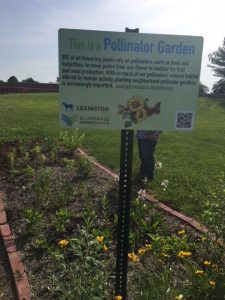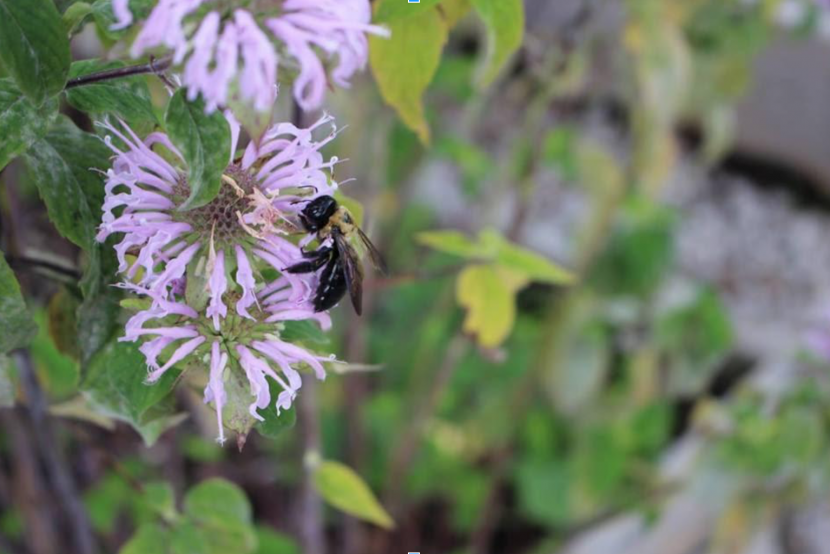Pollination Gardens
What are pollinators?
Bees, butterflies, birds, bats, moths, flies, wasps, and other small animals that help plants reproduce are considered pollinators.

Garden Springs Garden
2005 Dogwood Dr, Lexington, KY 40504
Want to know more? You can text your questions to Lisa at (859) 229-6262
Why are they important?
Pollination is the first step in plant reproduction. All life on Earth depends on successful pollination to provide food, shelter, and oxygen. Pollination occurs when pollen grains from the male germ cell of the plant reach the female part, or stigma, of the plant. Ninety (90) percent of all flowering plants require pollination.
Pollinators such as bees, birds, bats, and butterflies are crucial in the process of pollination. While in search of nectar, the pollinators rub against the flower parts and transfer pollen. This allows a tiny pollen grain to travel down the stigma and fertilize the egg to form a seed.
There are many different types of pollinator species and they can each carry pollen in different ways. These animals create partnerships with plants to carry out the life-sustaining needs of both groups. Many plants use various techniques to attract pollinators. Some flower petals even have lines or markings that guide the pollinators to the nectar.

Declining populations: what’s the problem?


Pollinator’s in a Rain Garden at Homegrown Hideaways
Pollinator gardens and habitats: how to help pollinators
How to help pollinators:
